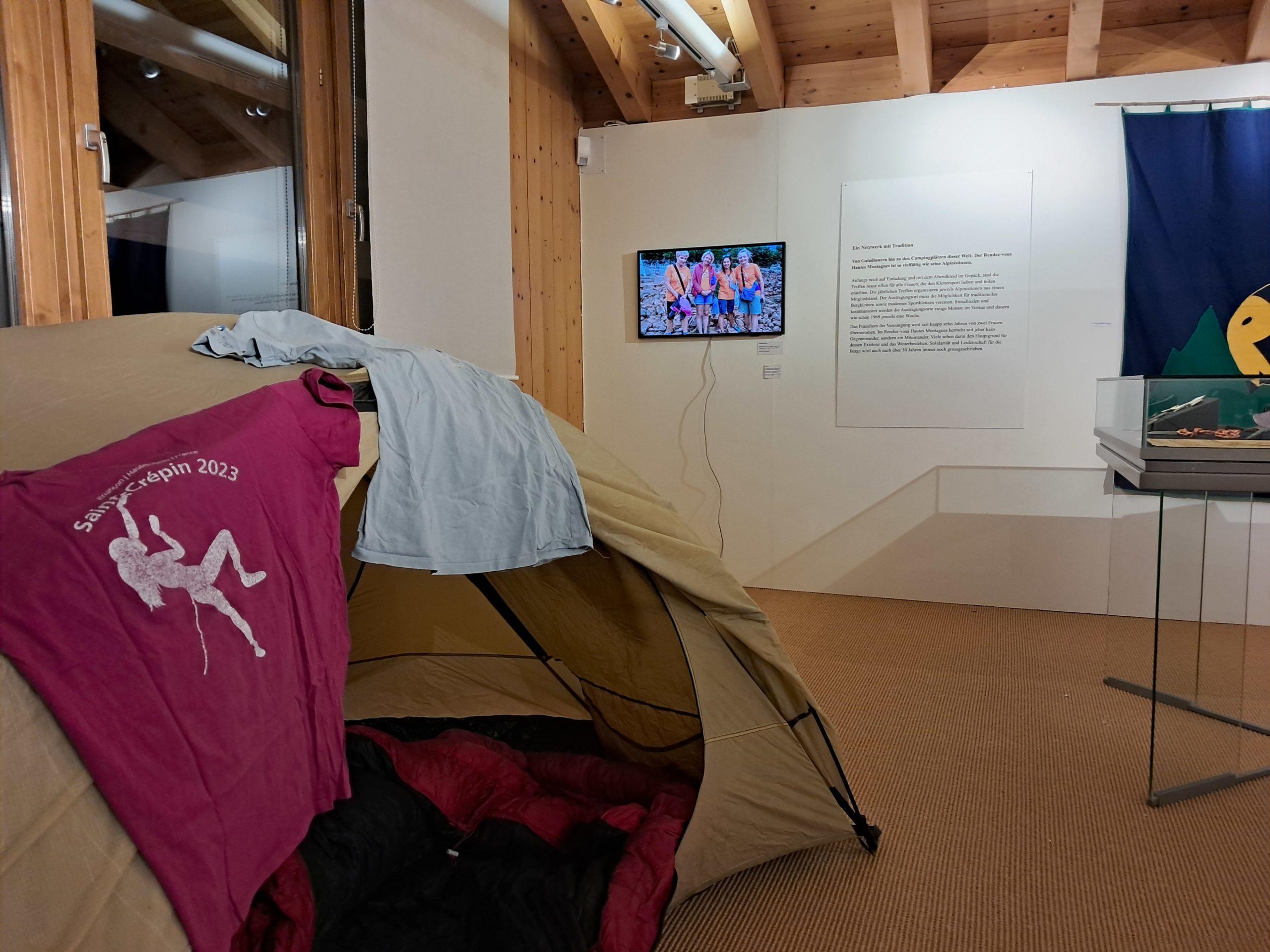Strong women on the rope
Inrtoduction
Women on the summits of the world – what is taken for granted today had to be fought for by female mountaineers for over 200 years.
Until the 18th century, the mountains were considered a place of the uncanny and threatening. It was only with the advent of the natural sciences that a new interest in them emerged. Mountaineers conquered the peaks. Women were rare or only accompanied. Courageous and equipped with a crinoline and rope, however, they did not miss out. Soon the first women were climbing the steep rock faces on their own.
However, they remained unwelcome in alpine clubs. They therefore established their own associations, such as the Swiss Women’s Alpine Club. A determined woman from Engelberg also founded a loose association of female alpinists in her home town over 50 years ago, which never lost its strength: the Rendez-vous Hautes Montagnes.
Entrance - The founding
“Long live the Rendez-vous Hautes Montagnes!”
With these words, Felicitas von Reznicek from Engelberg opened the founding ceremony of the Alpine Women’s Association in May 1968.
1968 was a year full of anniversaries in Engelberg. The Swiss Women’s Alpine Club also celebrated its 50th anniversary. The renowned journalist and author Felicitas von Reznicek was asked to write a commemorative publication for the SFAC. The material was so comprehensive that it resulted in her book: From the Crinoline to the Sixth Degree. Inspired by this, Reznicek launched an international meeting of top female alpinists.
Over 70 mountaineers from 12 nations came to Engelberg for a week. On May 16 at 12.10 pm, the champagne popped on the Klein-Titlis. The Rendez-vous Hautes Montagnes (RHM) association was born. To this day, mountain camaraderie, but also the love and awe of reaching for the highest goals on the most difficult routes, are important to her. Since then, women have met every year in the name of the RHM and scaled the peaks of the world together.
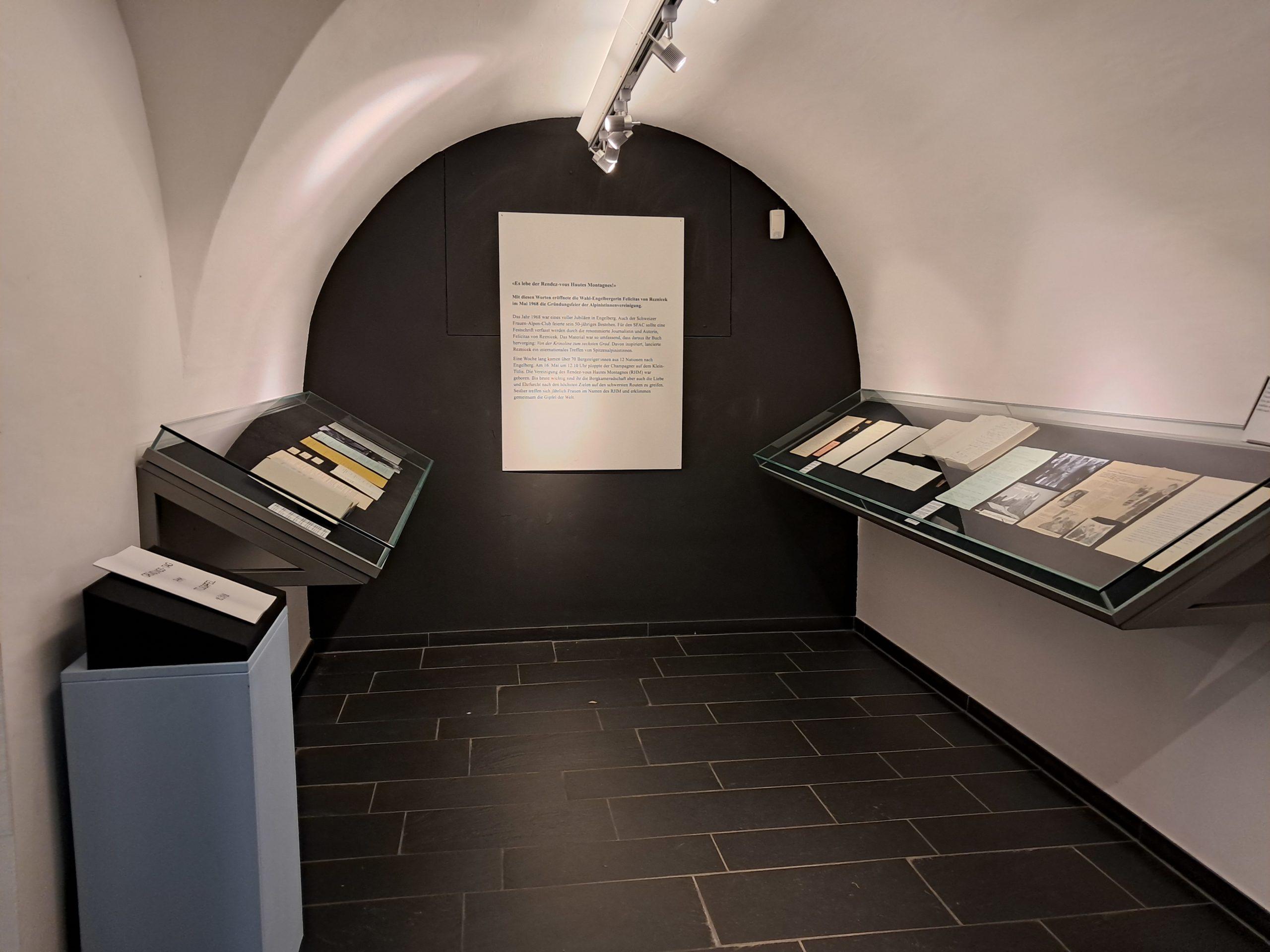
Together we are strong!
Together we are strong!
The international meeting of top female alpinists was meticulously planned. In addition to mountain clubs and alpine associations from other countries, press representatives from 112 newspapers and magazines from German- and French-speaking Switzerland as well as Germany, Austria and France were invited. The minutes of the first meeting the year before show the active support of the local tourism sector and hotel industry. They provided rooms, meals and even train tickets for the guests of honor and the press.

Ground Floor - Beginnings of alpinism
Beginnings of alpinism
The Alps were transformed from an eerie place into a source of inspiration. Scientific expeditions laid the foundations for alpinism.
For a long time, the Alps were considered threatening and inaccessible. They were wild and legendary places full of danger. But with the Enlightenment, the perception changed from fear to fascination. The Romantic era (1795-1840) turned the mountains into a place of longing. Artists such as Caspar Wolf shaped the image of the Alps as a majestic yet frightening landscape.
At the same time, the first scientific expeditions began. From the end of the 18th century, explorers climbed the peaks to discover their secrets. It was the birth of alpinism. The mountains became a place of self-awareness and adventure. Since then, mountaineering has been a symbol of progress and physical achievement and continues to attract people to the heights all over the world.

Pioneer with a brush
Pioneer with a brush
Caspar Wolf (1735 – 1783) was a pioneer of landscape painting. His works combine detailed observations with dramatic stagings of the mountain landscape. They changed the perception of the Alps in Europe. Two of the aquatints shown here tell the Central Swiss legends of the Dragon’s Cave in Stans and the Devil’s Bridge in the Schöllenen Gorge. The third work shows the Lauteraar Glacier and testifies to the newly emerging fascination for the mountain world.

Surveying the mountains
Surveying the mountains
In the 19th century, Alpine associations such as the Swiss Alpine Club promoted the scientific exploration and symbolic conquest of the Alps.
Mountaineering pioneers were instrumental in the scientific mapping of the mountains. They climbed the mountain peaks and took climatic and geological measurements. Mapping increased our understanding of mountain landscapes. However, a sporting ambition also lay dormant in the first ascents. Many of the first mountaineers came from far away and a race to conquer the Alps ensued.
The Swiss Alpine Club (SAC), founded in 1863, played a key role in this. It promoted cartography, built mountain huts, marked hiking trails and made the mountains accessible from then on. At the same time, the club wanted to be present in the mountain landscape. Through its promotional activities, the SAC shaped modern-day alpinism and its status as part of the Swiss identity.
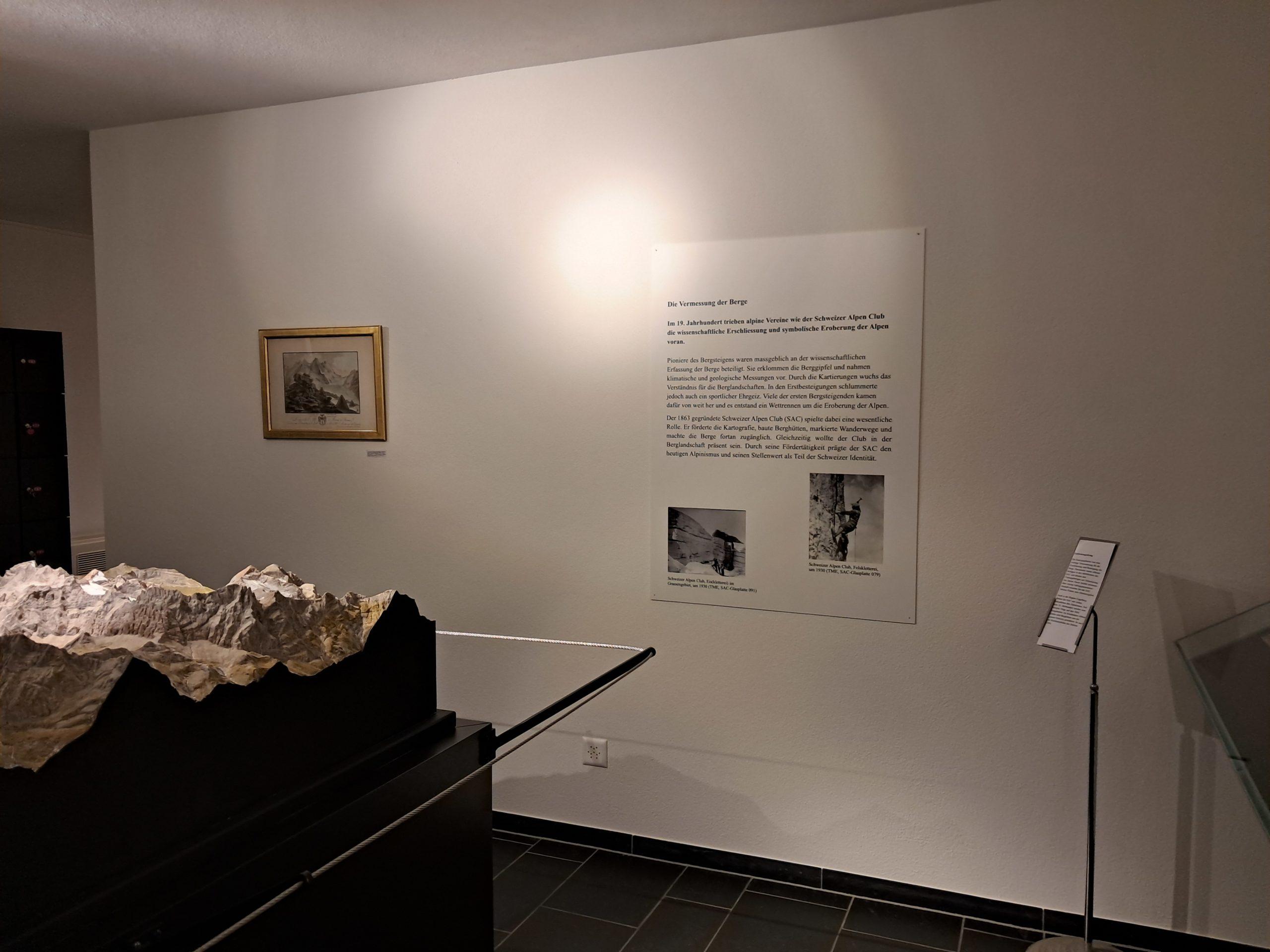
Thirst for discovery
Thirst for discovery
Cartography was an important prerequisite for exploring and climbing the mountains. Panoramas were often supplements in the SAC yearbooks and served as a guide for club members. Xaver Imfeld from Sarnen drew over forty mountain panoramas. For this reason, the SAC Pilatus section made him an honorary member.
The SAC has also been promoting alpinism in the Engelberg region for many decades. For example, routes up the Titlis have been recorded since the 18th century. The club hut album features mountain huts from all over Switzerland. This includes the Ruckhubel hut of the Titlis section.

First Floor - Female alpinism
Female pioneers on the mountain
Men dominated mountaineering for a long time. However, the first courageous women were already to be found on the rock faces at the beginning of alpinism.
At its peak in the second half of the 19th century, alpinism was strongly influenced by the gender roles of the time. Climbing mountains was a practice of the middle classes. Mountaineering stood for virtues such as courage, discipline and the urge to conquer, which were attributed to men in the bourgeois role model. Women were increasingly denied access to mountain sports and alpine clubs.
Social ideas assigned women to the domestic and private sphere. They saw them as physically and mentally unsuitable for the exertions of the mountains. Despite everything, they found their way. Pioneering women in the mountains challenged the male-dominated image of alpinism by also climbing to the summits in skirts. Mountaineering became a symbolic act of emancipation.

Clear order
Clear order
Clothing and photographs show the role concepts of the time. The equipment on display here accompanied women on their adventures and bears witness to the social rules that also applied to mountaineering. The women’s ski clothing shows the conflict between role models and practical mountain clothing particularly clearly. They cleverly bypassed the expectation of wearing skirts and wore pants underneath, which were more suitable for the mountains.

Staged photographs
Staged photographs
Equipped with skirts and poles, the female mountaineers defied social expectations. It was common to be photographed in the studio as mountaineers. The reproductions of the SAC Engelberg glass plates show alpine souvenirs for tourists around 1900.

The woman herself
The woman herself
The exhibits stand for a lively club culture with committed women. They organized countless tours and meetings for decades. In response to their exclusion as members of the SAC around 1907, women founded their own club. Photographs and equipment tell of a female mountaineering culture characterized by challenges, an outstanding thirst for adventure, camaraderie and the joy of the mountains.

Engelberg merges
Engelberg merges
The SFAC Engelberg section was founded in 1958. A few years later, the relationship between the SAC and SFAC and a possible merger was also the subject of lively discussion here and in the rest of Switzerland. The documents and correspondence bear witness to the disputes.
However, the SFAC and SAC in Engelberg agreed in 1978 that a merger made sense. The merger agreement confirms the association at national level from 01.01.1980.
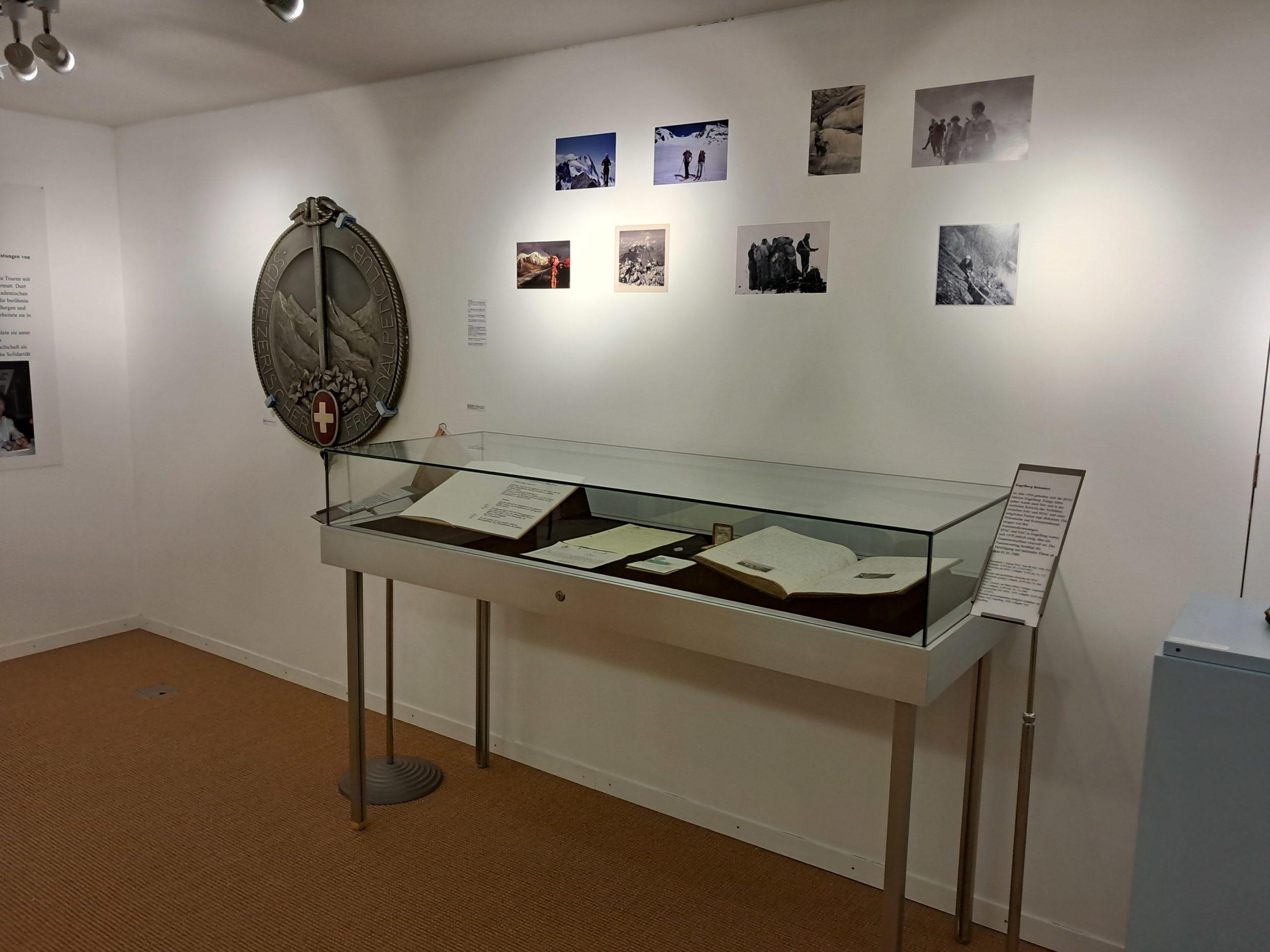
Heidi Lüdi's equipment
Heidi Lüdi's equipment
The objects belonged to mountaineer Heidi Lüdi. Her equipment accompanied her on numerous tours in Switzerland and abroad, including in the Himalayas. Heidi Lüdi was a member of the SFAC and the RHM and conquered the highest peaks in the world.

Felicitas von Reznicek
The baroness of the mountains
Felicitas got a taste of the mountains at a young age. She was fascinated by the achievements of women in alpinism.
Introduced to the mountains by her father, she completed her first tours at the age of 15 in the Bavarian Allgäu. In her younger years she was often in Zermatt. There she cultivated close contacts with prominent members of the Munich Academic Alpine Club. She also met the famous alpinist Eleonore Noll-Hasenclever at the elegant Hotel Seiler. She wrote about her love of the mountains and her fascination with the achievements of top female alpinists in numerous publications.
She founded the alpine association Rendez-vous Hautes Montagnes partly as a result of her in-depth research into the history of women’s alpinism. She has always been inspired by the idea of the rope team as a community of destiny that relies on indispensable solidarity and camaraderie in the Alps.

Equipped with courage and a pen
Equipped with courage and a pen
Felicitas von Reznicek had an eventful life. During the Third Reich resistance, she lost neither her courage nor her strength to write.
Born in Berlin Charlottenburg in 1904, Felicitas grew up in an artistic household. Her father was the famous composer Emil Nikolaus von Reznicek. She maintained a close relationship with him throughout her life. Felicitas was a successful author herself and published over 30 books and numerous newspaper articles.
As a half-Jew, “Fee” lived in Berlin during the Nazi regime. Despite the constant danger of being exposed, she joined the political resistance as early as 1933. Even after the world war, she did not agree with the political situation in Germany and campaigned against it. As a result, she was forced to flee Berlin in 1953. Long-time family friends from Zurich brought her to their apartment in Engelberg. The baroness remained in the valley community until her death on February 27, 1997.

Silent heroine
Silent heroine
For a long time, nobody knew about her courageous deeds during the Nazi regime. It was only many years later that Felicitas wrote down her memoirs. However, these remain unpublished to this day. Curt Crönert’s novel takes up her story. It tells of her courage but also of her feelings for a man from the ranks of Adolf Hitler. You can read the first pages here.

Second Floor - Rendez-vous Hautes Montagnes
The beginnings of the Rendez-vous Hautes Montagnes
Membership was open to all, whether women or their husbands. Community was always a top priority in the loose association.
In the beginning, membership was conditional on mastering the third degree in lead climbing and the fourth degree in second climbing. For a long time, the association refrained from making a financial contribution. Only the Fonds de Solidarité was set up for women who were “less well-off”. There were no statutes, but there was a presidium and a vice-presidium. Country delegates were elected in order to ease the organizational burden and ensure communication in increasingly distant countries such as India and Australia.
In contrast to other alpine clubs, neither financial status nor gender should play a decisive role in membership. Men were always welcome as companions. The most important thing remained the community and mutual support across all national borders.

A steep path
A steep path
From the very beginning, camaraderie and mutual support were important to the founder and president. The political situation in particular made it difficult to organize the annual meetings. On the other hand, the Cold War (1947-89) made it difficult for top female alpinists such as Nadja Fajdiga from Eastern European countries to travel abroad and take part in the RHM meetings.
However, Felicitas von Reznicek received criticism from within her own ranks for promoting them. After 15 years, she finally relinquished her presidency and Verena Jäggin officially took over the role in 1986. The SAC’s invitation to an international mountaineering meeting testifies to the recognition that the Rendez-vous Hautes Montagnes received after years of work.
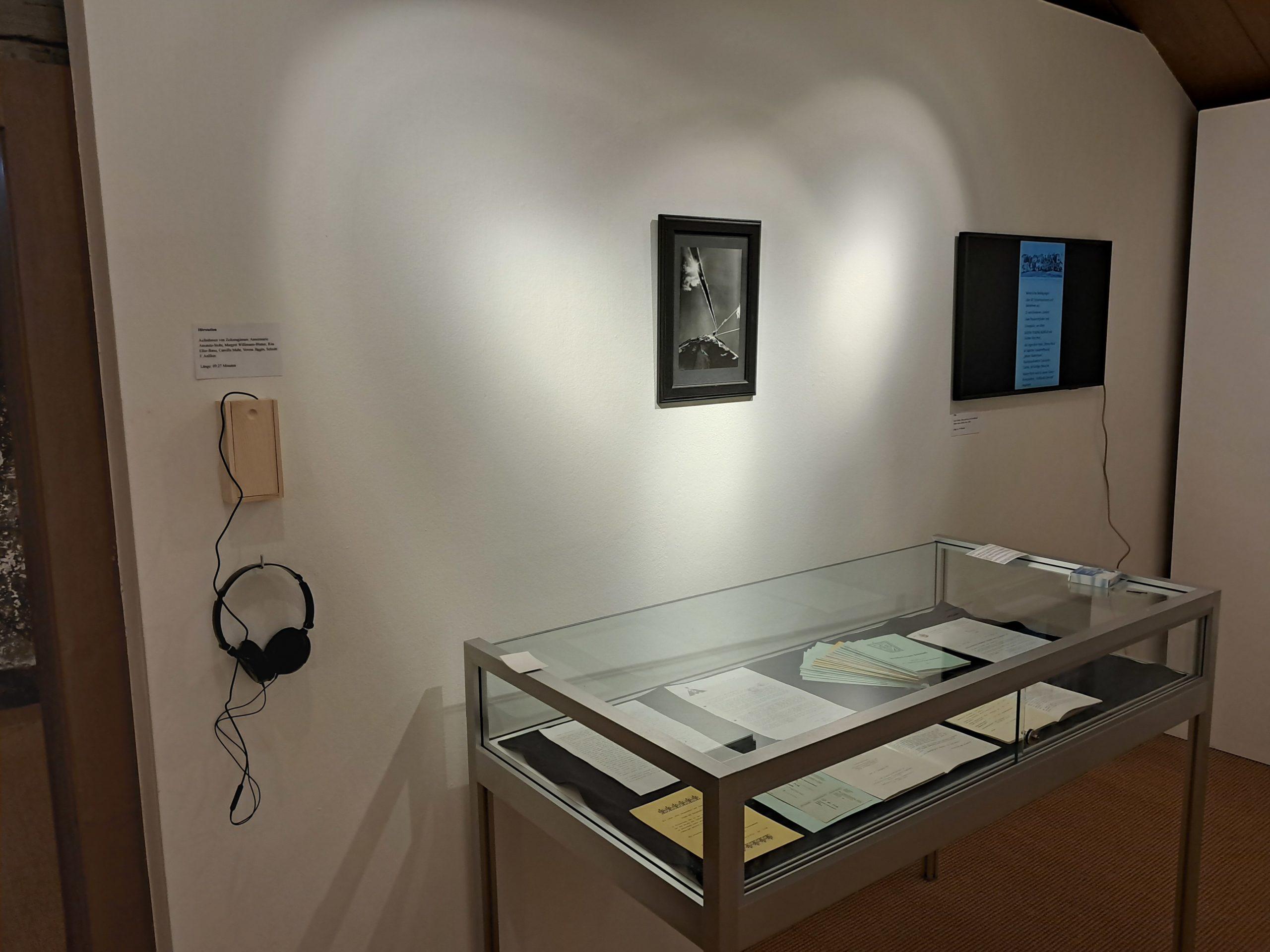
Every year again
Every year again
Many meetings have taken place all over the world since the RHM was founded. However, the RHM always returns to Engelberg for its anniversaries.
The first meeting of the Rendez-vous Hautes Montagnes took place in Zermatt in 1969. Of the almost 100 members, a third were from Engelberg, including political and business celebrities. World-famous alpinists such as Sherpa Tenzing Norgay, who made the first ascent of Mount Everest in 1953, also attended the meetings.
Special souvenirs in the form of pendants or T-shirts are designed for each summer meeting. The RHM pennant also bears witness to the presence of the alpinists.
However, the association has always returned to the place where it was founded to mark milestone anniversaries. On its 10th anniversary, the association was presented with a stone monument in front of today’s Tal Museum.

A souvenir
A souvenir
Souvenirs were made for each meeting. T-shirts have been available for many years. These also make the alpinists look like a unit. Their friendship is also reflected in the postcards they send to their comrades at home. The milestone anniversaries were celebrated in a special way. During the 10-year anniversary, a rich program was held: from a photo exhibition and a Tibetan ballet to the inauguration of a stone monument in honour of the association and its founder. Today’s Tal Museum has always played a role in this. There was even a drink on the forecourt to mark the founding.

A network with tradition
A network with tradition
From gala dinners to campsites around the world: the Rendez-vous Hautes Montagnes is as diverse as its female climbers.
Initially by invitation and with an evening gown in tow, the meetings are now open to all women who love and want to share the sport of climbing. The annual meetings are organized by female alpinists from a member country. The venue must combine the possibility of traditional mountain climbing and modern sport climbing. The venues are decided and communicated several months in advance and, as in 1968, each lasts a week.
The presidency of the association has been held by two women for almost ten years. The Rendez-vous Hautes Montagnes has always been based on cooperation rather than opposition. Many see this as the main reason for its existence and continued existence. Solidarity and passion for the mountains are still very important, even after more than 50 years.
